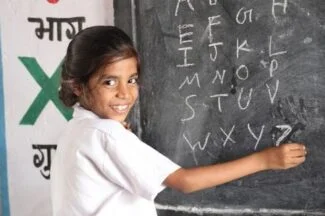~ Tejas Bobe
Gender and Caste Divide in the Indian Education System
It is a well-known fact that education is the backbone of a nation, as well as the symbol of its prosperity. Well-educated citizens ensure that the nation keeps on progressing. Hence, it becomes the responsibility of the nation to educate the citizens. When it comes to education in India however, it is clear that there exists inequality in the amount and quality of education different people receive. And the inequality is not only based on gender, but also on the economic and religious background of the individual. For decades India has been marred by this problem. Inequality in education is one of the main factors that’s barring India from being a developed nation.
Inequality in education in India is not a modern phenomenon, but it has been in existence even in ancient India. Back then, the right to education in Sanskrit was restricted only to the Upper Castes. Ever since there have been many reforms and reformers that have changed the landscape of the educational system in India. Even though the problem as a whole has not been dealt with, but there have been significant improvements in the educational system of India.
One of the main forms of discrimination in education that exists is based on gender. Historically, girls were deprived of the right to education since ancient times. For many centuries there existed gendered education in India, where only boys held the rights to education. According to statistics provided by the Government of India, in 1950-51, there were only 39 females per hundred males in primary schools, while the number shot up to 93 in 2014-15. This is a clear indication of how the scenario in education is rapidly changing. However, when it comes to higher education, the number drops down to 85 females per 100 males. Even though there are gaps to be filled yet, but it is a clear indication that education is now accessible to more girls today than it ever was before.
Another important aspect leading to discrimination in educational opportunities is the caste system that has been prevalent in India for centuries. According to the caste system of India, only people belonging to upper castes hold the right to education. This is a major problem that’s bugging the educational system, especially in the rural and tribal parts of India. To date, there are many places in India where children belonging to lower classes are deprived of the right to education. Even if these children are enrolled in schools, they are not treated equally. In some cases, there are even reports about untouchability being practised in different parts of the country. Despite this, improvement in enrollment of lower-class children in schools has been on a steady rise all over the country.
The third type of discrimination seen is in terms of the economic background of the individual. It is harder for the people belonging to poorer sections of the population to receive a quality education. The dropout rates are higher in these sections of society than in any other sections. The main reason behind it is that getting a proper education in the country is expensive. A huge percentage of the population of our country has either never attended school or had to drop out earlier. To counter these issues, provisions are made by the government so that education can be free or cheaper for the underprivileged.
Even though these forms of inequality exist all over the country, but on the bright side, over the years more and more people across the divides of gender, caste, creed and economic status have started gaining access to quality education thanks to social reforms in the society and active involvement of the government. Discrimination in the field of education has slowly become a past scenario, and the active participation of the citizens to eradicate it is an apt example of how people can bring in social reforms. Looking at the current speed of progress in the quality of education, and it’s accessibility to all the citizens, India can finally break out from the centuries-old prejudices and make a giant leap towards development. Education is the only tool in the present generation that can bring about a positive change in the outlook of society, and it’s culture.
” Until we get equality in education, we won’t have an equal society. “
Sonia Sotomayor
Must Read – EDUCATION—NEED OF THE HOUR





